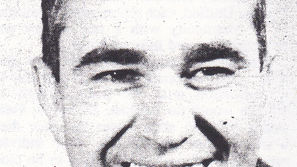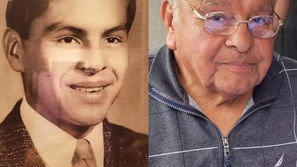The sheriff saved the bull
- Bill Coate
- Dec 25, 2021
- 3 min read

Courtesy of the Madera County Historical Society
This photo taken in 1901, shows a bullfight that took place at the north end of E. Street. As fate would have it, the bull lived to fight another day, having been rescued by Sheriff William Thurman.
In 1901, Madera had an honest-to-goodness bullfight. It was part of a “grand fiesta.” Some local promoters went to Mexico and hired Manuel Ramitos, a well-known matador from the state of Sonora, and a couple of his assistants.
The Mexican bullfighters were seen as “rather small, but evidently tough and wiry.” No one doubted their ability to do the job; the newspaper praised them in exalted terms, asserting that “While their equals might be found, it is impossible to discover their superiors in the gentle art of toying with gentleman cows.” With the appearance of the matadors, Madera made ready.
Madera’s crowd was huge. Most filled the seats of the temporary arena at the north end of E Street, while some of the overflow perched in the surrounding trees. The roofs of the sheds, which commanded a view of the bullring, were packed, and “a barn overlooking the pen held a select party of women who looked through openings made by knocking some boards out of the end.”
The first bull was not very aggressive, and the second wasn’t any better. In fact, it completely refused to make a run at the matador, jumping the fence instead. Those in charge of the event attempted to save face by roping the bashful bovine and at least provided an exhibition of bull riding for the disappointed crowd. Alas, the bull would not even buck, and the rider simply dismounted in complete disgust.
It wasn’t until the fourth bull was brought into the ring that the crowd was treated to a bit of the thrill it was seeking. This animal was enraged and charged the matador, who dropped everything and climbed a fence, which the bull proceeded to demolish. Only the quick action of the assistants saved the bullfighter. This bull was finally secured and returned to the pen, leaving Maderans still waiting to see their bullfight.
Finally, with the last bull, Maderans got a taste of the real thing. The Tribune reporter noted that the last animal “was a good fighter.” After getting the bull completely angered, Matador Ramitos called for the banderillas. As these darts were brought out, the crowd shouted its approval. The banderillas were about a foot long and consisted of a stick wrapped with colorful paper. A small barb was placed in one end for the purpose of fastening the banderilla to the bull.
Ramitos took two of the darts and carefully approached the bull. The animal snorted, pawed the ground and then rushed the matador. Ramitos stepped nimbly to one side, thrusting a dart into either side of the bull’s shoulder; one fell out, and the other remained fastened. “As the steel went into the bull, he roared with pain and rage.” Cries emanated from the excited Maderans, as they drank in the “cleverness of the matador and the rage of the bull.” Bravo Captain; Bravo Toro,” yelled the crowd.
At this juncture, one of the assistants approached the animal and quickly thrust additional darts into its shoulders. Now it was time for the kill. The stands became quiet. Matador Ramitos drew his sword, with which he intended to dispatch El Toro. The moment of truth had come. Did Maderans really want to witness a bullfight?
At least one resident of our county did not, and his view of the spectacle perhaps carried the most weight. Madera County Sheriff William B. Thurman had had enough. At the most propitious moment, he stepped from the stands, entered the pit and put a stop to the fight, “thus ending the day’s sport.”
The bull was taken back to his pen, and the matador received the cheers of the assembled throng. Maderans had experienced enough south-of-the-border entertainment to last them awhile.
So that was how it went 120 years ago. I would love to have been there.


























Comments